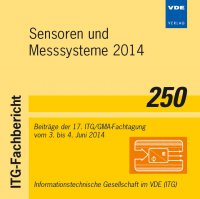Metal-Organic Frameworks as humidity sensor
Conference: Sensoren und Messsysteme 2014 - Beiträge der 17. ITG/GMA-Fachtagung
06/03/2014 - 06/04/2014 at Nürnberg, Deutschland
Proceedings: Sensoren und Messsysteme 2014
Pages: 6Language: englishTyp: PDF
Personal VDE Members are entitled to a 10% discount on this title
Authors:
Schlechte, Laura; Kaskel, Stefan (Technische Universitaet Dresden, Professur fuer Anorganische Chemie I, Bergstr. 66, 01069 Dresden, Germany)
Wehring, Bettina; Klein, Nicole; Beese, Harald; Graehlert, Wulf; Kaskel, Stefan (Fraunhofer IWS, Chemische Oberflaechen- und Reaktionstechnik, Winterbergstr. 28, 01277 Dresden, Germany)
Abstract:
Metal-Organic Frameworks (MOFs), a new class of highly porous materials, have been under intensive research in the last decade. MOFs are based on a modular concept by combining inorganic (metal or metal-oxo-cluster) and organic (multifunctional organic molecules) moieties. Highly porous materials like MOFs show by nature high sensitivity for gas and vapour adsorption due to their very effective adsorption and storage of analytes. Herein we use MOF-materials with open metal sites as humidity sensor. The adsorption/coordination of analytes on those attractive sites leads to a change of the coordination environment and therefore for many transition elements containing materials to a colour change in the visible region. Due to the adsorption itself a change of other optical properties like the refractive index are possible and therefore easy to detect using for example spectroscopic methods. More importantly, the uptake and release of guest molecules by porous MOFs as well as its response triggered by external stimuli can directly produce a readable optical signal which is usually even visible with the naked eye. The NIR-analysis, as compared to the UV/Vis analysis, is as well a very promising and more sensitive tool for the detection of water adsorption on MOF-materials at varying relative humidity. The integral intensity of the selected harmonic band of the water molecule can easily be correlated to the humidity level. This work demonstrates the high potential of MOFs serving as a sensor material for the detection of low water vapour concentration (ppm). Thin HKUST-1 MOF-coatings were characterized by FT-NIR and UV/Vis-spectroscopy during the adsorption of water vapour at different concentration levels. For the evaluation of a MOF-based optical humidity sensor, a thin layer of the functional MOF coated on a PET-substrate is placed in a transparent chamber (atm. pressure, 25 °C) connected to a double-pressure humidity generator. The measured UV/Vis/NIR spectra are correlated with the current water vapour concentrations. Using this setup we were able to evaluate the humidity level in a range from 3950 ppm down to 126 ppm.


